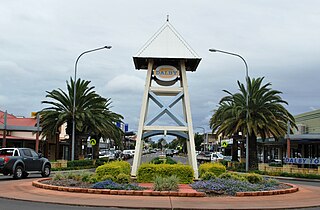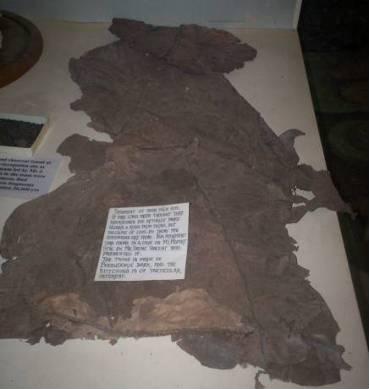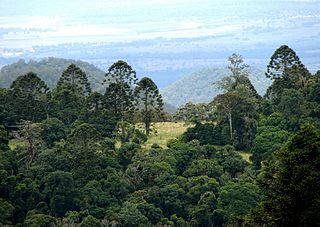
Bunya Mountains is a national park in the South Burnett Region, Queensland, Australia.

Kondalilla is a national park in the Blackall Range of South East Queensland, Australia, 91 km north of Brisbane. William Skene founded this area on his property while searching for lost cattle. He named it Bon Accord before giving it to the Queensland Government who, during the fifties, renamed it Kondalilla which is an Aboriginal word for running water. The area was first officially protected in 1906 as a recreational area, becoming a national park in 1945.

The Balonne River, part of the Murray-Darling Basin system, is a short and important part of the inland river group of South West Queensland, Australia.

Tarragindi is a suburb on the south side of the City of Brisbane, Queensland, Australia. It is represented through the Holland Park and Moorooka Ward councillors on the Brisbane City Council. In the 2016 census, Tarragindi had a population of 10,779 people.

The Darling Downs is a farming region on the western slopes of the Great Dividing Range in southern Queensland, Australia. The Downs are to the west of South East Queensland and are one of the major regions of Queensland. The name was generally applied to an area approximating to that of the Condamine River catchment upstream of Condamine township but is now applied to a wider region comprising the Southern Downs, Western Downs, Toowoomba and Goondiwindi local authority areas. The name Darling Downs was given in 1827 by Allan Cunningham, the first European explorer to reach the area and recognises the then Governor of New South Wales, Ralph Darling.

The Moonie Highway is a state highway of Queensland, Australia. Part of State Route 49, it leaves the Warrego Highway at Dalby and runs for over 290 km until it reaches St George. From there, State Route 49 continues west as the Balonne Highway. From Dalby, it continues north-east as the Bunya Highway.

Nanango is a town and locality in the South Burnett Region of Queensland, Australia. In the 2016 census, Nanango had a population of 3,599 people.

Aboriginal breastplates were a form of regalia used in pre-Federation Australia by white colonial authorities to recognise those they perceived to be local Aboriginal leaders. The breastplates were usually metallic crescent-shaped plaques worn around the neck by wearer.

Woorabinda is an Aboriginal community in Central Queensland, Australia, inland about two hours' west drive of Rockhampton. At the 2006 census, Woorabinda had a population of 851.
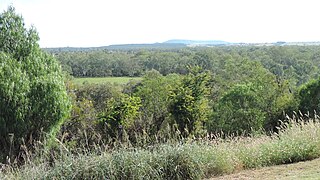
Taroom is a town in the Shire of Banana and locality split between the Shire of Banana and the Western Downs Region in Queensland, Australia. At the 2016 census, Taroom had a population of 869 people.
The Turrbal are an Australian Aboriginal nation located around the region of present-day Brisbane, Queensland. The name primarily referred to the dialect they spoke, the tribe itself being alternatively called Mianjin/Meanjin. The Turrbal are regarded as interchangeable with the Jagera.
The Wakka Wakka are an indigenous Australian people of the state of Queensland.
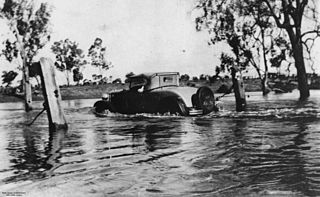
Dogwood Creek is a creek in the Maranoa Region, Queensland, Australia.

Taroom Aboriginal Settlement is a heritage-listed Aboriginal reserve at Bundulla, Taroom, Shire of Banana, Queensland, Australia. It was added to the Queensland Heritage Register on 13 May 2011. It is also known as Taroom Aboriginal Reserve and Taroom Aboriginal Mission.
The Yiman, also referred to as Yeeman/Eoman or Jiman, and by themselves in modern times as Iman, are an Indigenous Australian tribe living in the Upper Dawson River region around Taroom of eastern Central Queensland.
The Baruŋgam are an indigenous Australian people of Southeast Queensland
The Jarowair are an indigenous Australian people of the Darling Downs area of Queensland.
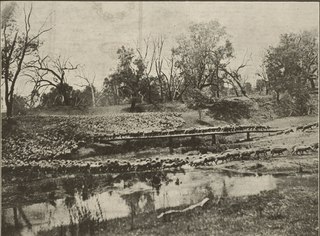
Warkon is a rural locality in the Maranoa Region, Queensland, Australia. In the 2016 census, warkon had a population of 33 people.

